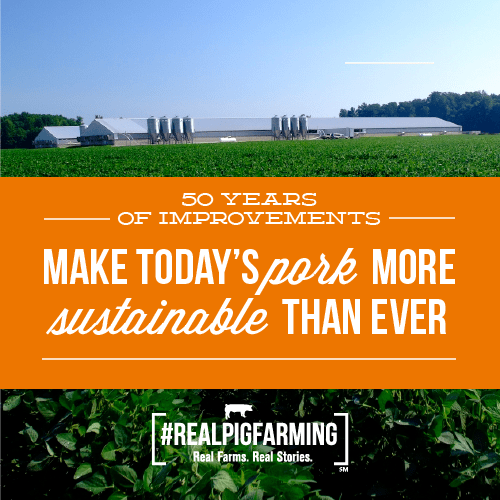Families can expect to pay record high prices at the grocery store for turkey this upcoming holiday season thanks to the impacts of the bird flu and inflation. American Farm Bureau Federation economists analyzed turkey and egg costs in their latest Market Intel.
Read MoreAvian influenza does not present a food safety risk; poultry and eggs are safe to eat when handled and cooked properly. There is no risk to the food supply, but birds from the flock will not enter the food system. No human cases of avian influenza viruses have been detected in the United States.
Read MoreLooking for the best steaks to grill? You won’t go wrong with these juicy and delicious steak cuts. All the favorites are here, including T-Bone, Tenderloin and Top Sirloin. Plus some new ones to master, such as the Flat Iron and Ranch Steak.
Read MoreLooking for great-tasting steaks and roasts that are affordable too? These overlooked budget-friendly faves – like Chuck Eye Roast, Sirloin Tip Steak and Brisket – are sure to delight your table.
Read MoreThere are pork cuts for every occasion. Whether you’re craving decadence like belly or ribs, or something lean like pork tenderloin or chops, pork’s flavor gives life to any cuisine.
Read MoreResponsible use of animal antibiotics benefits all of us by making food safer and more affordable, but changes to how they are used in livestock animals changed in 2017. Learn more about antibiotic use in animals and what that means for our food supply.
Read More“Beef is a high-quality protein powerhouse providing a unique combination of bioavailable iron, zinc and B vitamins essential to building and maintaining strength from infancy through our later years,” said Shalene McNeill, PhD, RD, NCBA Executive Director of Nutrition Research.
Read MoreFor chicken farmers, the well-being of the flock goes together with running an environmentally responsible and sustainable farm. The latest tech allows farmers to check for leaks in their waterlines, conserve energy usage, and flag potentially harmful ammonia levels. These efforts reduce waste, runoff and emissions.
Read MoreDairy farmers strive every day to produce wholesome milk and milk products that your family can feel good about eating. The U.S. Department of Agriculture (USDA) and Food and Drug Administration (FDA) regulate U.S. milk production, and its guidelines are some of the strictest in the industrialized world. Farmers, processors and government agencies all work together to ensure the milk you drink is safe and of the highest quality.
Read MoreDairy farming focuses on raising cows for the production of milk and other dairy products. The care of dairy cows is an important part of successful dairy farming. Dairy farmers take excellent care of their cows, providing their animals clean and comfortable housing, fresh water, food and medical attention when necessary.
Read MoreProviding safe, wholesome food is our most important responsibility. Ensuring pork food safety is a complex undertaking that requires awareness of the role that everyone plays in the food chain. On the farm, many factors can affect the safety of pork, which is why today’s farming operations employ a wide variety of technology and techniques to minimize food safety threats.
Read MoreSustainability on the farm is an ongoing commitment by pig farmers today. Farmer’s are committed, through ongoing environmental sustainability efforts, to safeguard natural resources for future generations. Over the last decade, we have played a leading role in advancing animal agriculture’s environmental and conservation efforts.
Read MoreFarmers are eager to explain how pigs are raised and cared for. Few people have firsthand knowledge of what modern pig farming looks like. Now more than ever, we have access to many tools and resources to better care for our animals and meet consumer demand.
Read MoreYou’ve likely seen various labels showing that beef is “natural” or “grass fed.” But what do these labels mean? All cattle spend a majority of their lives eating grass on pastures.
Read MoreIt is often an untold story, but farm families have led conservation efforts across the United State for generations. Today's farmers are strong examples of true environmentalists.
Read MoreSustainability is not a destination. It is a continuous journey being carried out by each generation of farmers responsible for raising and supplying beef across the world.
Read MoreCattle farmers and ranchers have many tools to keep the animals in their care healthy and safe, including nutrition programs, veterinary care, facilities that ensure comfort, and good management practices, such as low-stress handling, vaccines and antibiotics, when necessary.
Read MoreEveryone plays an important role in beef safety – from the cattlemen and women who continually invest in and learn from beef safety research studies to the various government entities that are responsible for enacting and overseeing food safety regulations and inspections.
Read MoreThe journey of raising beef is among the most complex of any food. Due in part to their changing nutritional needs throughout their lifetime, beef cattle often times will change hands and ownership up to three or four times, over the course of one and a half to three years, as they move through their various life stages.
Read MoreRaising healthy chickens is important to us, and we recognize that consumers want to better understand how their food is raised.
Read More




















